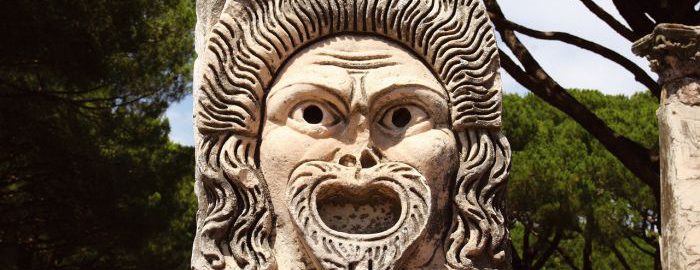In the coming months, projects will be implemented in the port of Ostia Antica, in which the Italian government, private organizations and international universities will actively participate. Ostia was a large port of ancient Rome that received huge shipments of grain, wine and olive oil from North Africa and South Italy to feed one million of the city’s inhabitants.
According to the plans, the following are to be: reconstructed (1) the ship; (2) a villa in which scientists hope to discover the remains of Saint Monica – the mother of the theologian and philosopher Saint Augustine – and (3) the rebuilt monuments of the port that have been forgotten over the years. Even though Saint Monica died in Ostia, her official tomb is in the Basilica of Saint Augustine in Rome. Many experts, however, doubt that Augustine’s mother was buried in Rome and hope to find her remains in the park next to the villa.
Ostia, as well as Pompeii and the smaller Herculaneum, destroyed as a result of the eruption of Vesuvius, offers visitors what tourists will not see in Rome – an extended “collection” of ancient buildings, especially tenement houses. New projects saw the light of day after impressive discoveries were made in Ostia in 2014. Researchers at the University of Southampton and Cambridge used new methods to scan and map underground structures on the far another side of the Tiber – for a time believed to have been outside Ostia Antica. The discovery proved that the port was much larger than originally thought.
In 2014, Ostia received over $ 5.6 million from the Italian government (data from last year are not yet available). Most of this amount was spent on restoring and clearing the vegetation of Ostia’s main road. Part of the money from the annual budget is allocated to excavation, although it is not a priority. Numerous tenement houses and buildings require renovation. Currently, we can admire fountains, theatres, temples, houses, barracks on Christmas Eve – the ancient fire brigade – or numerous Roman insulae in the port. According to Professor Carafa, only one tenement house has survived our times in Rome, while in Ostia there are a lot of them in the streets.
Today, many people are involved in the reconstruction of the port and encourage all of Italy to promote Ostia. In 2015, the place was visited by a total of 321,000 tourists – not much compared to the 6,6 million who admired the Colosseum and the Forum Romanum. Nevertheless, one should be glad that the number of visitors increased by 9% compared to 2010.







